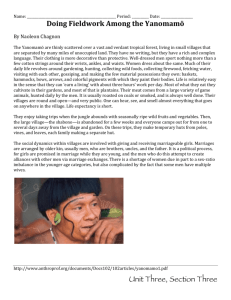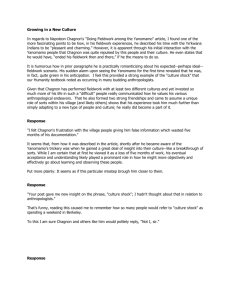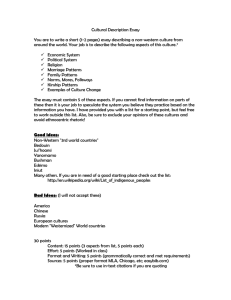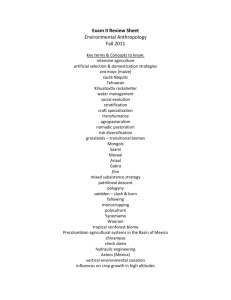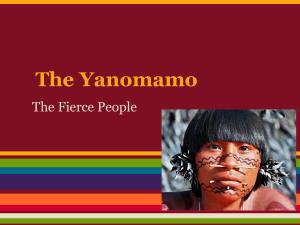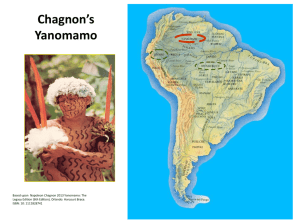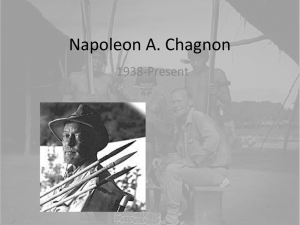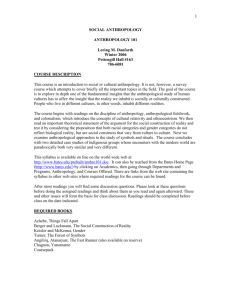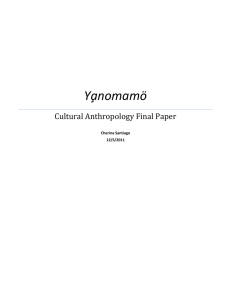LAZ B2 Simulation Listening Exam 02 April 2012
advertisement
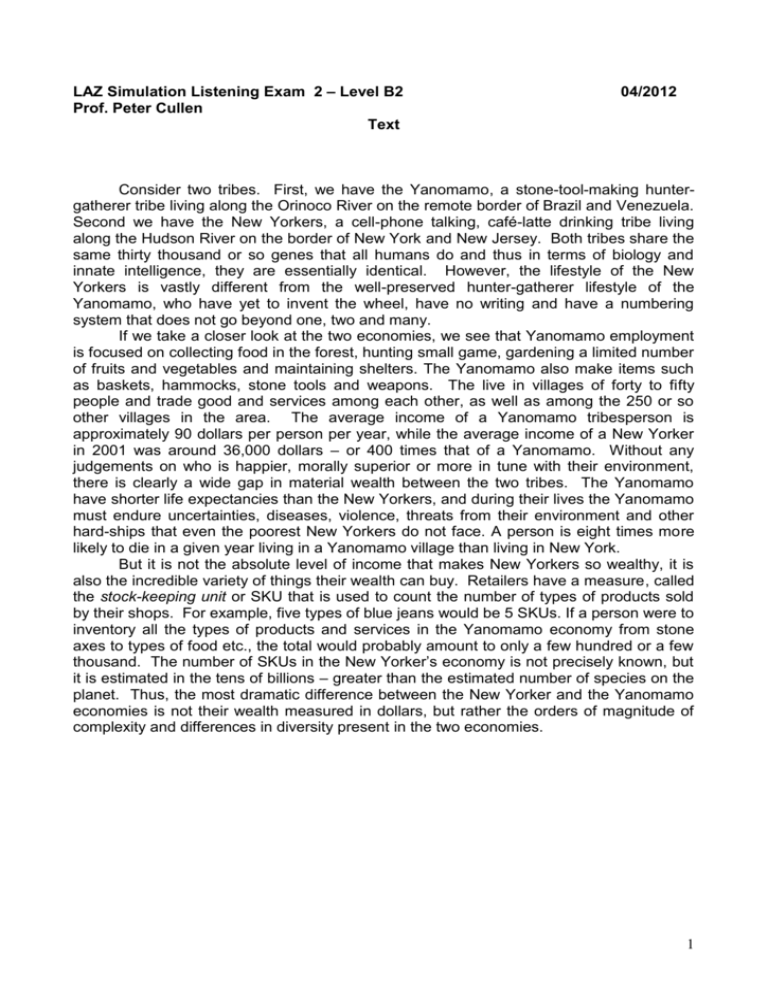
LAZ Simulation Listening Exam 2 – Level B2 Prof. Peter Cullen Text 04/2012 Consider two tribes. First, we have the Yanomamo, a stone-tool-making huntergatherer tribe living along the Orinoco River on the remote border of Brazil and Venezuela. Second we have the New Yorkers, a cell-phone talking, café-latte drinking tribe living along the Hudson River on the border of New York and New Jersey. Both tribes share the same thirty thousand or so genes that all humans do and thus in terms of biology and innate intelligence, they are essentially identical. However, the lifestyle of the New Yorkers is vastly different from the well-preserved hunter-gatherer lifestyle of the Yanomamo, who have yet to invent the wheel, have no writing and have a numbering system that does not go beyond one, two and many. If we take a closer look at the two economies, we see that Yanomamo employment is focused on collecting food in the forest, hunting small game, gardening a limited number of fruits and vegetables and maintaining shelters. The Yanomamo also make items such as baskets, hammocks, stone tools and weapons. The live in villages of forty to fifty people and trade good and services among each other, as well as among the 250 or so other villages in the area. The average income of a Yanomamo tribesperson is approximately 90 dollars per person per year, while the average income of a New Yorker in 2001 was around 36,000 dollars – or 400 times that of a Yanomamo. Without any judgements on who is happier, morally superior or more in tune with their environment, there is clearly a wide gap in material wealth between the two tribes. The Yanomamo have shorter life expectancies than the New Yorkers, and during their lives the Yanomamo must endure uncertainties, diseases, violence, threats from their environment and other hard-ships that even the poorest New Yorkers do not face. A person is eight times more likely to die in a given year living in a Yanomamo village than living in New York. But it is not the absolute level of income that makes New Yorkers so wealthy, it is also the incredible variety of things their wealth can buy. Retailers have a measure, called the stock-keeping unit or SKU that is used to count the number of types of products sold by their shops. For example, five types of blue jeans would be 5 SKUs. If a person were to inventory all the types of products and services in the Yanomamo economy from stone axes to types of food etc., the total would probably amount to only a few hundred or a few thousand. The number of SKUs in the New Yorker’s economy is not precisely known, but it is estimated in the tens of billions – greater than the estimated number of species on the planet. Thus, the most dramatic difference between the New Yorker and the Yanomamo economies is not their wealth measured in dollars, but rather the orders of magnitude of complexity and differences in diversity present in the two economies. 1 LAZ Simulation Listening Exam 2 – Level B2 04/2012 Prof. Peter Cullen ___________________________________________ Name, Date, and Registration Number Questions: Answer all 5 of the following questions. SIMPLE AND CORRECT IS BETTER THAN COMPLICATED AND WRONG. USE SHORT PHRASES AND SENTENCES. This exam requires interpretation and analysis. It is designed to test your ability to apply what you hear to possible discussion areas. 1. What are the basic characteristics of the two “tribes” discussed? 2. How do the Yanamomo use their time? 3. How extensive is the Yanamomo trading network? 4. What does the author infer about relationship between complexity, diversity and direct risk to life and health? 5. How does the author use SKUs to illustrate the practical differences between the two economies? 2 LAZ Simulation Listening Exam 2 – Level B2 Prof. Peter Cullen 04/2012 Answer Sheet 1. What are the basic characteristics of the two “tribes” discussed? The Yanamomo are latin American stone-tool/hunter-gather tribe while the New Yorkers live in North America and have an incredibly complex technological consumer culture. 2. How do the Yanamomo use their time? we see that Yanomamo employment is focused on collecting food in the forest, hunting small game, gardening a limited number of fruits and vegetables and maintaining shelters. The Yanomamo also make items such as baskets, hammocks, stone tools and weapons. 3. How extensive is the Yanamomo trading network? The live in villages of forty to fifty people and trade good and services among each other, as well as among the 250 or so other villages in the area. 4. What does the author infer about relationship between complexity, diversity and direct risk to life and health? The inference is that the more complex and diversified an economy is, the less exposed to risk (death from environmental factors, animals, disease) the population becomes. 5. How does the author use SKUs to illustrate the practical differences between the two economies? The NY economy has an order of magnitude of billions of Stock Keeping Units more complexity than the Yanomomo tribe. 3
